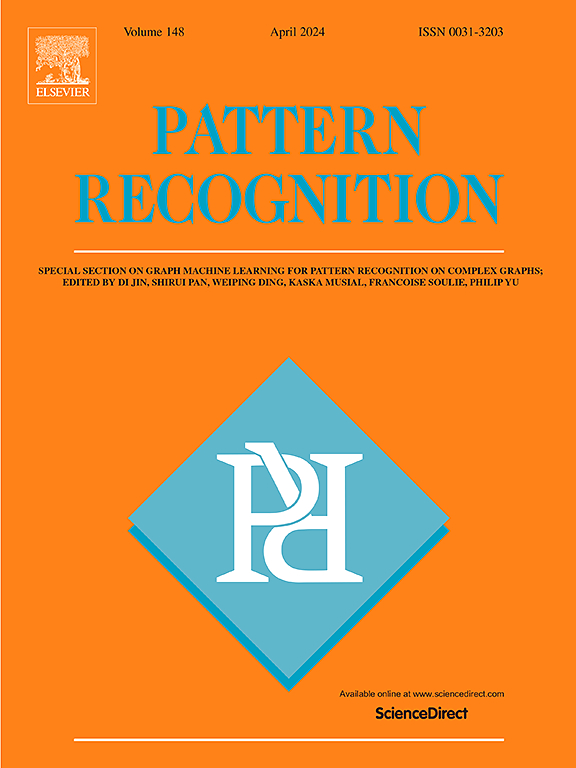Unaligned multi-view clustering via diversified anchor graph fusion
IF 7.5
1区 计算机科学
Q1 COMPUTER SCIENCE, ARTIFICIAL INTELLIGENCE
引用次数: 0
Abstract
Clear sample correspondence across views is a key presupposition of traditional multi-view clustering. However, in practical applications, uncertainties during the data collection process may lead to the violation of this presupposition, producing unaligned multi-view data. In this paper, to overcome the obstacle of multi-view fusion caused by unaligned samples and achieve efficient unaligned multi-view clustering, a novel Diversified Anchor Graph Fusion (DAGF) method is proposed. Specifically, view-specific bipartite graphs with diversified anchors are constructed to adapt to the characteristics of unaligned multi-view data. Then, with the devised sample alignment and anchor integration strategy, these bipartite graphs are fused to learn a joint bipartite graph with explicit cluster membership structure. The proposed DAGF method not only overcomes the adverse effects of unaligned samples on cross-view information fusion, but also preserves complementary view-specific clustering structure information, enabling efficient and effective clustering. Systematic experimental results on real-world datasets demonstrate the advantages of the DAGF method in both clustering performance and computational complexity. Code available: https://github.com/revolution6575/DAGF.git.
基于多元锚图融合的非对齐多视图聚类
跨视图清晰的样本对应关系是传统多视图聚类的一个关键前提。然而,在实际应用中,数据采集过程中的不确定性可能导致违反这一前提,产生不对齐的多视图数据。为了克服样本未对齐造成的多视图融合障碍,实现高效的未对齐多视图聚类,提出了一种新的多元锚图融合(DAGF)方法。具体而言,构建了具有不同锚点的特定视图二部图,以适应未对齐多视图数据的特点。然后,利用所设计的样本对齐和锚点整合策略,对这些二部图进行融合,得到具有明确聚类隶属结构的联合二部图。提出的DAGF方法不仅克服了未对齐样本对跨视图信息融合的不利影响,而且保留了互补视图特定的聚类结构信息,实现了高效的聚类。在实际数据集上的系统实验结果证明了DAGF方法在聚类性能和计算复杂度方面的优势。可用代码:https://github.com/revolution6575/DAGF.git。
本文章由计算机程序翻译,如有差异,请以英文原文为准。
求助全文
约1分钟内获得全文
求助全文
来源期刊

Pattern Recognition
工程技术-工程:电子与电气
CiteScore
14.40
自引率
16.20%
发文量
683
审稿时长
5.6 months
期刊介绍:
The field of Pattern Recognition is both mature and rapidly evolving, playing a crucial role in various related fields such as computer vision, image processing, text analysis, and neural networks. It closely intersects with machine learning and is being applied in emerging areas like biometrics, bioinformatics, multimedia data analysis, and data science. The journal Pattern Recognition, established half a century ago during the early days of computer science, has since grown significantly in scope and influence.
 求助内容:
求助内容: 应助结果提醒方式:
应助结果提醒方式:


